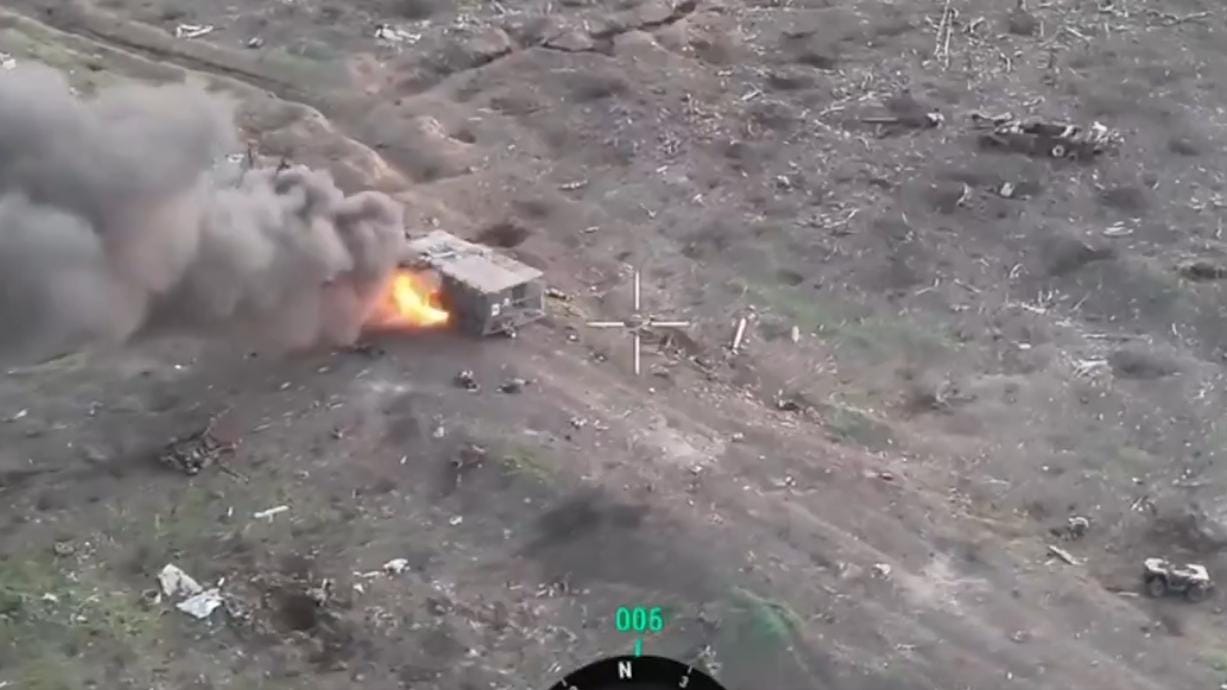Russian industry builds just 500 or 600 new tanks and a thousand or so new fighting vehicles every year. Russian forces in Ukraine have been losing around 1,400 tanks and 1,800 fighting vehicles every year.
At the same time, the Russian army in Ukraine has more than 400,000 people, thanks to an intensive mobilization effort to make good around 300,000 casualties. The army is 15 percent bigger than it was two years ago, meaning 15-percent greater demand for armored vehicles.
To make up the difference between losses and new production, the Russians have been pulling out of long-term storage thousands of vehicles, some of them dating back to the 1950s.
But reconditioning old vehicles takes time and money. And Cold War reserves are finite and running out. Under the most dire scenario for Russia, its stores of old tanks will deplete in a year.
All that is to explain why, all along the 600-mile front line of Russia’s wider war on Ukraine, we’re seeing more and more civilian-style vehicles replacing military vehicles in Russian assault groups. First, Chinese-made Desertcross-1000 golf carts. And now: Ural cargo trucks.
On or around Thursday, Russian troops attacked Ukrainian positions around Robotyne, in southern Ukraine’s Zaporizhzhia Oblast, in Ural trucks fitted with do-it-yourself, anti-drone cage armor. The trucks got hit—possibly by running over mines. The surviving infantry dismounted, only to get bombed by drones from the Ukrainian national guard’s 3rd Brigade.
The Russian military has thousands of Ural trucks and has lost around 1,300 of them in Ukraine. But the two that got wrecked assaulting Robotyne were the first the Russians have lost in a direct attack on Ukrainian positions. The 16-ton, 27-seat Ural-4320 is slow, unarmed and unarmored. It’s not an assault vehicle any more than a golf cart is.
But it—and other civilian vehicles such as the Desertcross—are only going to become more common all along the 600-mile front line as purpose-made vehicles run out.
Which is not to say Russia can’t win skirmishes, battles and even entire campaigns. Six months after Russia-aligned Republicans in the U.S. House of Representatives blocked further U.S. aid to Ukraine, Ukrainian brigades are desperately low on ammunition as they await emergency assistance from Ukraine’s European allies.
As fragile as Russian regiments are, Ukrainian brigades are even more fragile. “Our current advances are mainly due to two main factors, Russia’s popular Storm Z Telegram channel noted. “The increase in the strike capabilities of our aviation and, at the same time, the enemy’s decline in his own firepower.”
The implication, of course, is that an increase in Ukraine’s firepower—from, say, an end to the Republicans’ intransigence—could have devastating consequences for Russian troops riding into battle in unarmored trucks.
Read more:
Oh My God, There's Another Russian Turtle Tank
A Ukrainian drone-operator surely was gobsmacked on Monday when they spotted, on their screen, what may have been the strangest Russian tank in war teeming with strange Russian tanks. The apparent T-72 was encased in a solid metal shell that extended past the 51-ton, three-person tank’s hull. “This confirms my sus…






